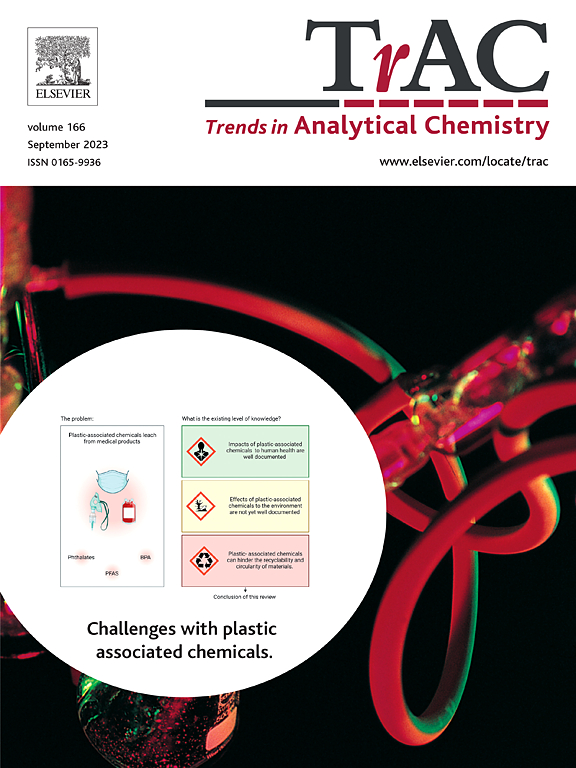The applications of bio-orthogonal Raman labels for visualizing lipids in eukaryotic cells
IF 12
1区 化学
Q1 CHEMISTRY, ANALYTICAL
引用次数: 0
Abstract
Lipid metabolism is closely associated with atherosclerosis, obesity, diabetes, and many other metabolic diseases. Visualizing the distribution and kinetics of lipids are critical for understanding the role of lipids. Compared with fluorophores, bio-orthogonal Raman labels, such as deuterium and alkynes, are smaller and have unique Raman vibrations in the silent region of the cell. They've been widely used as tags for the cellular lipid metabolism tracking. For Raman tags of deuterium, the molecular mechanisms involved in atherosclerosis formation, lipid droplet doping, lipid storage capacity, and the physical properties of lipids are reviewed. For Raman tags of alkynes, multiple design strategies, including conjugation with multiple aromatic hydrocarbons and isotope labeling, are summarized for stronger signals and multiple imaging. The novel bio-orthogonal Raman tags of nitriles and astaxanthin is also described. The unique advantages of Raman spectroscopy combined with bio-orthogonal Raman labeling have been demonstrated in lipid imaging, and these applications provide new biological insights into lipid metabolism.

生物正交拉曼标记在真核细胞脂质可视化中的应用
脂质代谢与动脉粥样硬化、肥胖、糖尿病等代谢疾病密切相关。可视化脂质的分布和动力学对于理解脂质的作用至关重要。与荧光团相比,生物正交拉曼标签,如氘和炔,体积更小,在细胞的沉默区具有独特的拉曼振动。它们已被广泛用作细胞脂质代谢跟踪的标签。对氘的拉曼标签在动脉粥样硬化形成、脂滴掺杂、脂质储存能力和脂质物理性质等方面的分子机制进行了综述。对于炔类的拉曼标签,总结了多种设计策略,包括与多种芳烃缀合和同位素标记,以获得更强的信号和多重成像。介绍了一种新型的丁腈和虾青素生物正交拉曼标签。拉曼光谱结合生物正交拉曼标记的独特优势已在脂质成像中得到证明,这些应用为脂质代谢提供了新的生物学见解。
本文章由计算机程序翻译,如有差异,请以英文原文为准。
求助全文
约1分钟内获得全文
求助全文
来源期刊

Trends in Analytical Chemistry
化学-分析化学
CiteScore
20.00
自引率
4.60%
发文量
257
审稿时长
3.4 months
期刊介绍:
TrAC publishes succinct and critical overviews of recent advancements in analytical chemistry, designed to assist analytical chemists and other users of analytical techniques. These reviews offer excellent, up-to-date, and timely coverage of various topics within analytical chemistry. Encompassing areas such as analytical instrumentation, biomedical analysis, biomolecular analysis, biosensors, chemical analysis, chemometrics, clinical chemistry, drug discovery, environmental analysis and monitoring, food analysis, forensic science, laboratory automation, materials science, metabolomics, pesticide-residue analysis, pharmaceutical analysis, proteomics, surface science, and water analysis and monitoring, these critical reviews provide comprehensive insights for practitioners in the field.
 求助内容:
求助内容: 应助结果提醒方式:
应助结果提醒方式:


